
Wilson is trying to start a new revolution in tennis with the release of their innovative racquet the Clash. This new racquet family will incorporate new technologies, FreeFlex and StableSmart , to make the frame more versatile for the ever-changing game of tennis. Players will be able to swing freely with more confidence and not lose out on control, stability or spin. The Clash 100 Tour is a slightly heavier frame than the Clash 100, gearing towards players that want a little more control and stability without the loss of flexibility. As a truly loyal Wilson racquet user, I was both excited and nervous to see what changes this frame brought to the court.
Groundstrokes At first, this frame took some time to get use to since the flexibility is very apparent. When I started to hit forehands or backhands, I felt a slight bend in the frame almost like its moving the racquet head faster through contact. I personally liked this feeling and started to get locked into my shots right away. As long as I kept attacking the ball, I could easily control and pinpoint the ball into the corners. However, when I slowed down my swing the ball would take off unexpectedly resulting in the ball going out. On defense, the racquet helped me more by providing easy power but I still needed to generate some racquet head speed to keep the ball from flying on me. Compared to the Clash 100 , the static weight of this frame is noticeable and the extra 0.5 ounce impacted the stability in a great way. The added stability really helped me keep up with hard hit shots whenever I was on the baseline and not twist in my hand whenever I hit the side of the frame. One area that I think could be improved is on slice shots. Whenever I did hit a slice the ball stayed low and had plenty of bite, but I couldn’t keep the ball deep consistently. I would be required to swing harder than normal otherwise the ball would just sit up in the middle of the court.
Volleys Thanks to the great amount of flexibility, this racquet performed very well at net. I got plenty of feel for the ball allowing me to dictate where my volleys went on the court. Thanks to the added mass I never felt my volleys spray away or lose control even when the ball was hit hard directly at me. Although the weight is slightly heavier, I didn’t feel like I could get in trouble because the racquet is very mobile. During quick exchanges I easily got the frame into position and finished off the point with an offensive mindset. Dropshots too were great to hit since I could accurately direct my shot without worrying about it going too long. Whether you need to drive the volley deep, hit a sharp angle or keep up with fast exchanges, this frame will keep you in the winning position while at net.
Serves & Overheads Serves and overheads were pretty good with this frame, but tended to favor my flatter hits. I felt I could get more control with the Tour version because of the heavier weight. The ball doesn’t generate much pace off the serve, but I felt I could accurately place it in the box and keep my opponent on the defense right away. Slice serves were pretty effective and usually stayed low to the ground making it harder to return. Kick serves struggled a little more and didn’t jump up over my opponent’s head making it easy for them attack. Players that like to hit with more slice or kick will want to try out the Clash 100.
Overall Wilson has made a great innovative racquet that I think many players will enjoy. The greater amount of flexibility in the frame is very interesting and this Tour version provides players with a little more control than the standard Clash 100. There is plenty of feel, power, stability and spin enabling aggressive hitters to take advantage of their opponents whenever they play. Whether you are an Ultra, Burn, Blade or Pro Staff user, the Clash 100 Tour may become your new weapon of choice.
About the Reviewer: Chris Virk-Brown currently works at Tennis Express on the Content Marketing team. He previously played at Neumann University and coached at the collegiate level for 3 years. He is an active USTA League and Tournament player.
Copyright 2024 . Tennis Express ©

Select adjustment
Tennisthis.com
We got your tennis racquet reviews, string reviews, tournament recaps, player happenings, and much more right here!
Wilson Clash Tour Review
The Wilson Clash Tour is my new racquet of choice
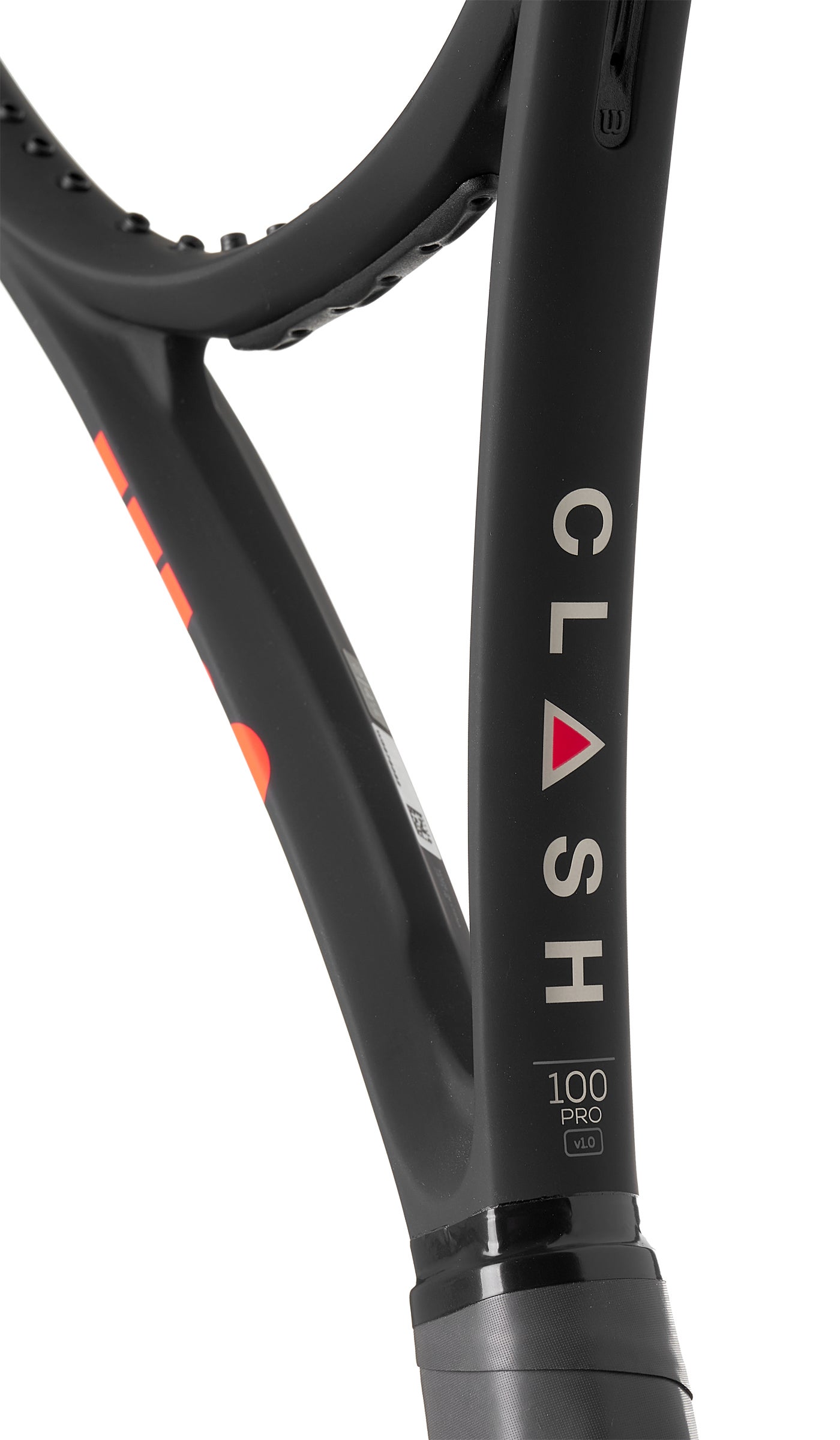
I like racquets that carry weight in the handle and throat of the racquet and the Tour does just that weight 11.5 ounces strung with a 9 point head light balance. Without trying to sound like an ad campaign, the geometry of the throat gives the racquet incredible stability despite very little weight in the hoop
Wilson Clash Tour Review: Playtest
When I play with the tour I constantly find myself aiming for smaller and more aggressive targets because I continue to pinpoint whatever I aim for. It’s a fairly open pattern, but noticeably tighter than the 16×18 of my Prince Phantom Pro 100P . Switching from a racquet with a 330 swing weight, I tried the regular Clash 100 and felt like the ball lacked a the weight with its right at 11 ounce frame (310 grams) and 310 swing weight. At the suggestion of a friend, I tried the Wilson Clash Tour and it was everything I was looking for.
The tour comes in with a swing weight just over 320, but the super head light balance makes it play very fast and maneuverable but still offer plow through that you will struggle to find in the ~11oz family of racquets.
It’s hard to say what facet of the game the tour thrives in most. Ground strokes were easy to hit, and produced heavy, penetrating balls. The racquet has the SW to redirect pace but has the maneuverability to roll the ball for tight cross court angles. The spin window is wide with a deep sweet spot which helps me feel super connected to the ball. Volleys were great too. The flex and feel of the racquet allowed for quick, penetrating shots while still offering a package that felt made for soft handed drop volleys. With the stability construction of the racquet, I would say that the deep, punch volleys are definitely where this racquet shines. Targeting, again, was very easy. Whether it was attacking a ball above the net or blocking the ball crisply, I pointed and it shot.
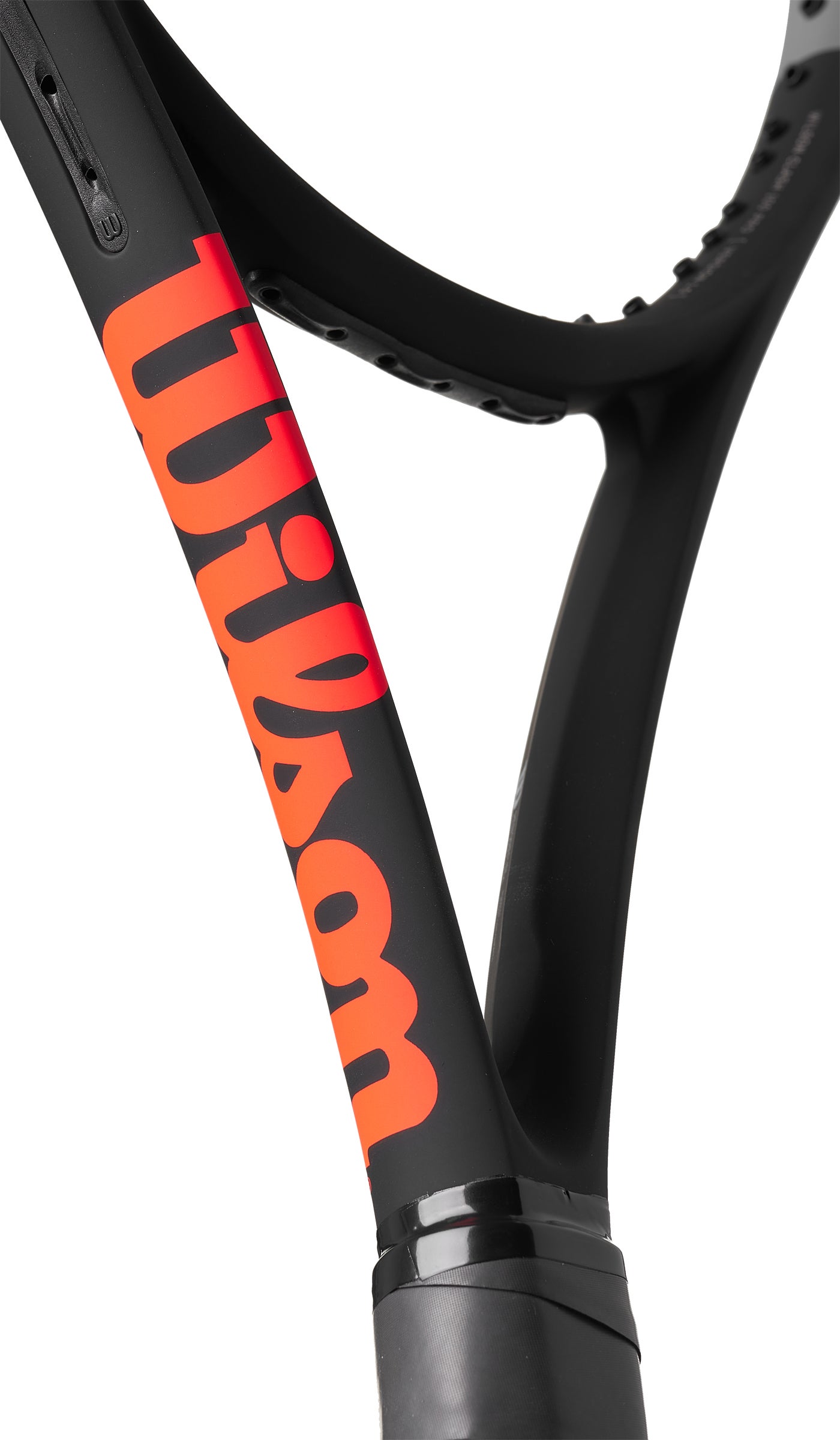
The only shot where the Wilson Clash 100 Tour did not shine for me was the backhand slice. Admittedly, it’s not one of my best shots, but my Prince Phantom Pro 100P rips them in a way I’ve become accustomed too, and there was definitely a noticeable drop off. I feel obliged to come up with a second critique, so I will also say the paint job is kind of lame. However, I’m going to offset that by saying the matte finish looks great on it. I know there’s a decent sized portion of the Wilson community cheering for a return to gloss, but for the Clash line, I’m good with the softer, more textured finish.
Simply put, the clash claims of being everything you could ask for are super real. If you haven’t hit with a clash or Clash Tour, all I can say is demo one today. You might not make the switch, but it seamlessly blends everything that rec players ask for in a way that is extremely worth trying.
Wilson Clash Tour: Specs (Strung)
Head Size: 100 in² (645.16 cm) Length: 27in (68.58cm) Strung Weight: 11.5oz (326g) Balance: 9 pts HL (31.5cm) Swingweight: 322 Stiffness: 55 Beam Width: 24.5mm / 24.5mm / 24.5mm String Pattern: 16 Mains x 19 Crosses String Tension Recommendation: 48-58 pounds (21.5kg – 26kg)
Pick up a Wilson Clash Tour today from Tennis-Warehouse
- Recent Posts
- Blade V7 vs Clash 98 - August 31, 2019

- Skip to primary navigation
- Skip to main content
- Skip to primary sidebar
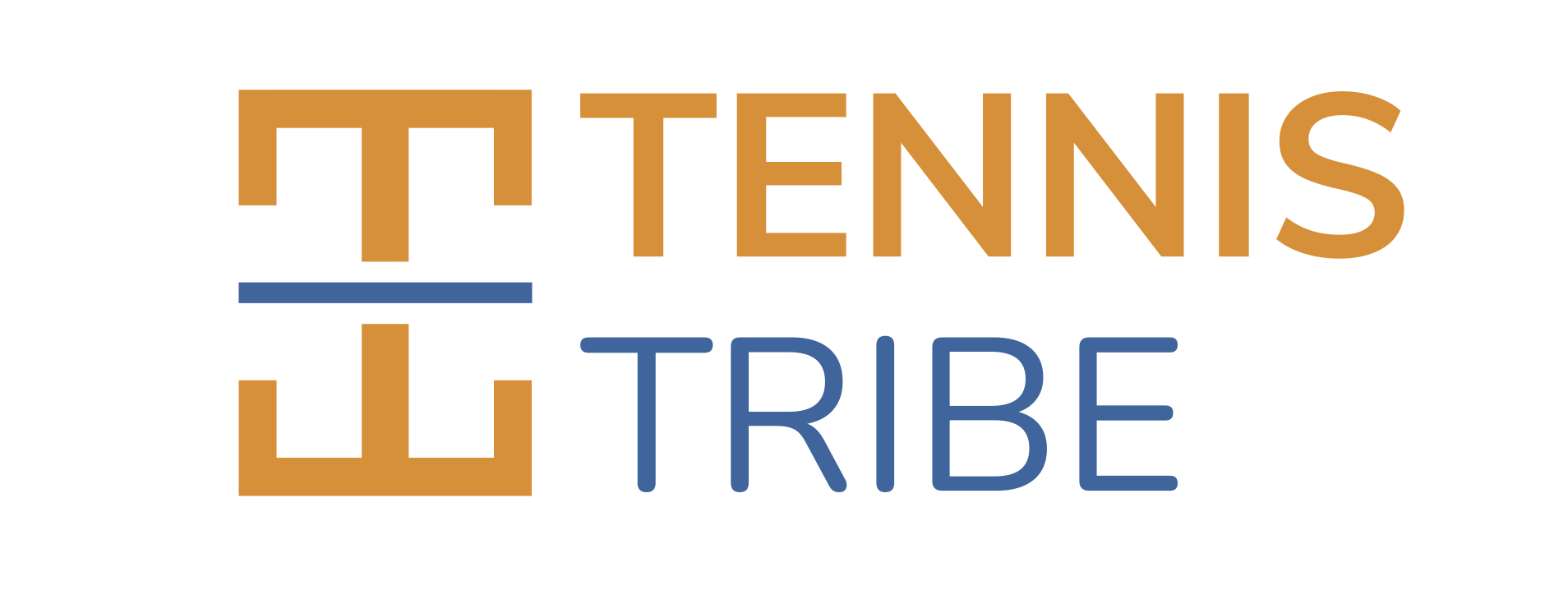
Tennis Tribe
Tennis Racquet & Gear Reviews, Doubles Lessons & News
Wilson Clash Review: The #1 Intermediate Tennis Racquet. Compare 6 Different Models
Will Boucek · June 25, 2024
When you buy a product through our links below, we may earn money from our affiliate partners to help support the site. However, this does not affect our evaluation or recommendation of each product. See our list of partners & how we get paid here . You can also learn our process for reviewing tennis gear here .
The Wilson Clash is one of the best tennis racquets for comfort on the market. Below, we’ll review the Wilson Clash, including pros, cons, and different models of the racquet. Then, we’ll compare it to other tennis racquets to help you decide if the Clash is right for you.
Review Summary & Ratings for the Wilson Clash
The Wilson Clash tennis racquet is one of Wilson’s newest series of racquets. They’ve recently released version 2 of this racquet, called the Clash v2.
The Clash was built for adult recreational and competitive club tennis players seeking a comfort racquet. It is one of the best tennis racquets on the market today with a forgiving and easy-to-swing frame.
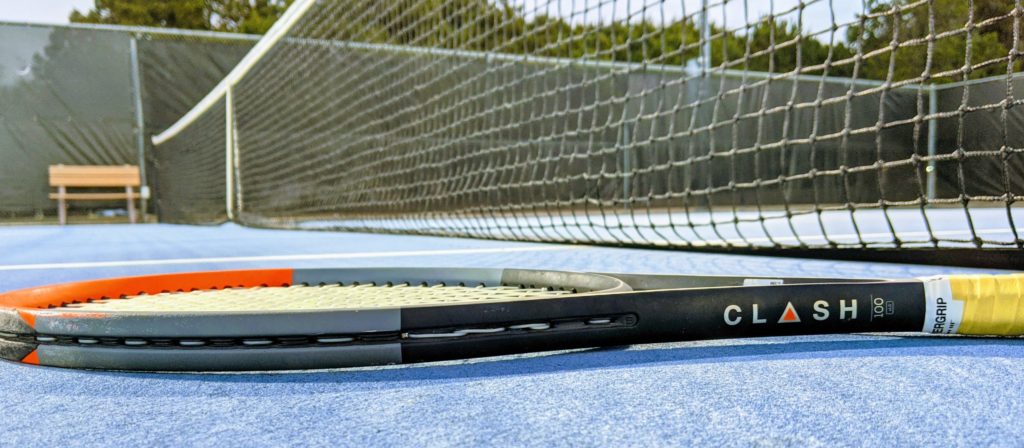
See our ratings, plus the pros and cons of the Wilson Clash below for a quick glance at how it performs compared to other tennis racquets.
Our Ratings for the Wilson Clash
- Groundstrokes: 8
- Our pick for #1 intermediate tennis racquet
- Great for most skill levels
- Most comfortable racquet on the market
- Adds control & feel on both groundstrokes & volleys
- Very flexible frame can help with elbow pain
- Not a lot of power for beginner players
- Low stability & control for advanced players
Different Versions of the Wilson Clash Tennis Racquet
The Wilson Clash tennis racquet comes in several versions that vary in weight and size. Below is a list of the different Wilson Clash racquets on the market today.
- Wilson Clash 100 v2
- Wilson Clash 100 Pro v2
- Wilson Clash 98 v2
- Wilson Clash 100L v2
- Wilson Clash 100UL v2
- Wilson Clash 108 v2
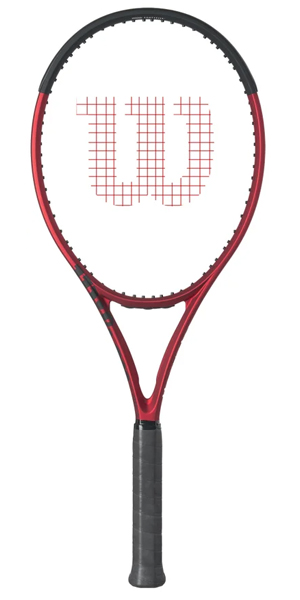
We’ll review each version in more detail below.
What did Wilson Update with the Clash v2?
With the newest version of the Clash, Wilson only updated a few models.
- The Clash 100 v2 is slightly less headlight giving it a bit more stability than the original.
- The Clash 100 Pro v2 and Clash 98 v2 now have a 16×20 string pattern which adds control and feel for more advanced players.
- Other models have essentially not changed other than the cosmetics.
You can find the new & old versions of the Wilson Clash here .
3 Steps to Find the Perfect Tennis Racquet for Your Game
Free checklist with 27 racquet recommendations
Wilson Clash 100 v2 Review: A Top-Tier Intermediate Racquet
We’ll start with the standard version, the Wilson Clash 100 v2. Below are the specifications and on-court performance you should expect from this racquet.
Wilson Clash 100 v2 Racquet Specifications
- Weight: 11 oz. strung
- Head Size: 100 square inches
- Length: 27 inches
- Balance: 320 mm (slightly less headlight than the original)
- String Pattern: 16×19
The Wilson Clash 100 is one of the most well-rounded racquets on the market. It excels in comfort and has specifications that are great for most players, except for total beginners and highly advanced tennis players.
The 100 square inch head size makes it good for all skill levels. The 16×19 string pattern will help beginners and intermediate players learn topspin. And at only 11 ounces, it is heavy enough for high-level intermediate tennis but still easy to handle.
Other Sellers: Amazon.com | Wilson.com
The Clash 100 Has a Perfect Blend of Comfort and Control
Wilson put their newest FortyFive technology into this racquet frame which creates maximum comfort. The Clash is probably the most arm-friendly racquet on the market for players who suffer from tennis elbow .
This flexibility, frame design, and string pattern help you generate good spin and control on groundstrokes, volleys, and serves. Beginner, intermediate, and even some advanced players will love this combination of comfort and control.
- The feel and spin you can generate from the baseline make the Clash 100 great for singles players.
- The control and easy maneuverability make it great for doubles players who like to move forward for volleys.
Because the Clash 100 is so flexible, it is not the most powerful tennis racquet. Tennis players who aren’t as physically strong or athletic and need a racquet with more power should see our Wilson Ultra review or Babolat Pure Drive review .
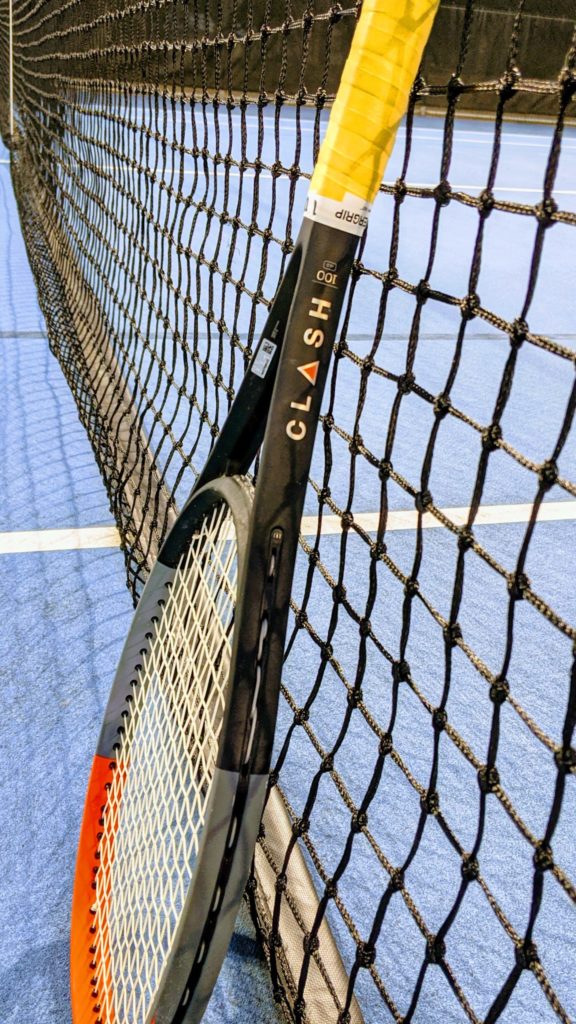
Although the newest Clash has better stability than the previous model, it’s still not as stable as many advanced tennis racquets . High level players who hit the tennis ball harder should consider the heavier Wilson Clash 100 Pro v2 .
Wilson Clash 98 v2 Review
A version of the Clash racquet designed for even better control, the Clash 98 is an even more advanced tennis racquet. It keeps the comfort of the Clash technology while adding stability.
Wilson Clash 98 v2 Racquet Specifications
- Weight: 11.5 oz. strung
- Head Size: 98 square inches
- Balance: 318 mm
- String Pattern: 16×20 (original version was 16×19)
This racquet has a smaller head size and therefore a smaller sweet spot. This will help more advanced players handle the racquet a bit easier while increasing control and feel on their groundstrokes. The added weight will help increase power and stability as well.
The Clash 98 is a Great Advanced Racquet for Comfort
This racquet’s size and specs make it a high-level intermediate to advanced racquet. Because of the Clash’s flexibility, the Clash 98 is one of the most comfortable, arm-friendly tennis racquets on the market for that skill level.
The Clash 98 is a great baseline racquet. You’ll have great feel, spin, and control on your groundstrokes. Against hard-hit balls, you may not have quite the stability of other tennis racquets. For increased stability without sacrificing too much comfort and feel, see our Wilson Blade review .
I recommend the Clash 98 for high level intermediate and advanced players who like to rally from the baseline and need a comfortable racquet.
Wilson Clash 108 v2 Review
The Clash 108 is one of the best beginner tennis racquets on the market for players who are serious about improving their game.
The Wilson Clash 108 Specifications
- Weight: 10.4 oz. strung
- Head Size: 108 square inches
- Length: 27.25 inches
- Balance: 345 mm
- String Pattern: 16×19
The head size and length of the Clash 108 make it great for people just starting out in tennis. It has a big sweet spot and is relatively lightweight.
Any adult or teenager would find it easy to improve and develop their strokes with the Clash 108. You’d be able to swing this racquet with ease and learn topspin as you transition your game.
However, I wouldn’t recommend this for intermediate level players or adults who are athletic with good hand-eye coordination. In this case, I’d still recommend the Clash 100 or 100L.
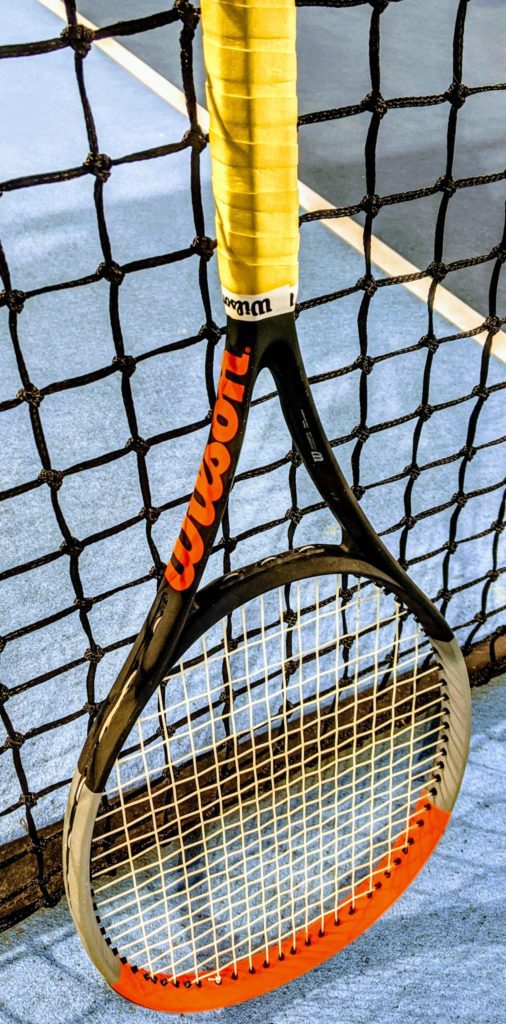
The Clash is a Balanced Racquet
The Clash 100 v2 performs well in most areas on the court.
- On groundstrokes, the Clash is very maneuverable and provides a good amount of control and feel.
- On volleys, the Clash provides good control but lacks a bit of stability.
- On returns, the Clash can lack some stability and control against pace.
- On serves, the Clash performs well in producing solid power and spin while maintaining comfort.
Overall, the Clash is great for players who like a racquet that is balanced and arm-friendly.
Stop paying full price for tennis gear! Get deals on shoes, racquets & more up to 70% off .
Reviewing Other Versions of the Wilson Clash
The other versions of the Clash vary from professional to beginner style racquets.
The Best Alternatives to the Wilson Clash
There are few tennis racquets similar to the Clash, which has only been out for a few years. However, below are some alternative racquets you may want to test.
- Babolat Pure Drive – This racquet has more power but less comfort and control than the Clash. It might be a better option if you are a beginner who needs more power, or an advanced player who needs better stability.
- Wilson Blade – The Blade is a popular, flexible tennis racquet for more advanced players seeking better control while maintaing a high level of comfort.
- Head Boom – A more powerful racquet than the Clash, the new BOOM has great comfort and spin for all skill levels.
- Solinco Blackout – A more stable racquet that is a little less maneuverable but feels more solid on contact.
About Will Boucek
Will Boucek is the Founder & CEO of Tennis Tribe. With over two decades of experience playing & coaching tennis, Will now works as a doubles strategy analyst for ATP & WTA tour players and coaches. Will helps tennis players at every level play better doubles through smarter strategy. He also has expertise in tennis racquets & gear, testing the latest products from Wilson, Babolat, Head, Prince, and other tennis brands.
Reader Interactions
Leave a reply cancel reply.
Your email address will not be published. Required fields are marked *
FREE 20-page guide - Learn 3 doubles tactics to force errors and get more easy volleys! Download
Check out my custom vibration dampener
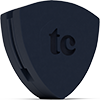
An Unfiltered Wilson Clash 100 Pro v2 Review & Playtest
We hope you love this article. Just so you know, TennisCompanion may collect a small share of sales from the links on this page to help keep this site running. Learn more . Disclosure: Wilson gave me this frame to evaluate, but they did not pay me to write this review or influence its contents.

By Jon Crim TennisCompanion
Updated for 2022, the Wilson Clash 100 Pro v2 seeks to build on the first generation’s popularity with an intriguing update that includes a new 16×20 string pattern to enhance control.
However, beyond the sting pattern, Wilson didn’t stray too far from the original design’s specs, opting for a moderate refinement they hope will capture the attention of existing users while pulling in a new audience that may have held off last time around.
To help you decide if the Wilson Clash 100 Pro v2 aligns with your style of play, I’ll share my thoughts on the racquet’s design, ideal string setup, and on-court performance in this review. I’ll also provide my take on whether you should spend your money upgrading for existing first-generation users.
To keep the review as concise as possible, I won’t dive into the specs, technical features, or alternative racquet you might want to consider. If you’d like to explore those, I’d encourage you to check out my complete Wilson Clash 100 Pro v2 product page .
For reference, here’s my playtest equipment:
- Racquet: Wilson Clash 100 Pro v2
- String: Luxilon Alu Power
- Overgrip: Wilson Pro
- Ball Machine: Spinfire Pro 2
- Racquet Bag: Vessel Baseline
If you’re interested in this racquet, you might also want to check out my reviews on the Wilson Clash 98 v2 , Clash 100 v2 , and Clash 108 v2 , one of which might be a better fit for you.
Article Contents
Click below to jump to a section
Tap below to jump to a section
Strings & Tension
Performance & ratings, groundstrokes, upgrade advice, new to tenniscompanion.
Create a free account and explore my latest videos below
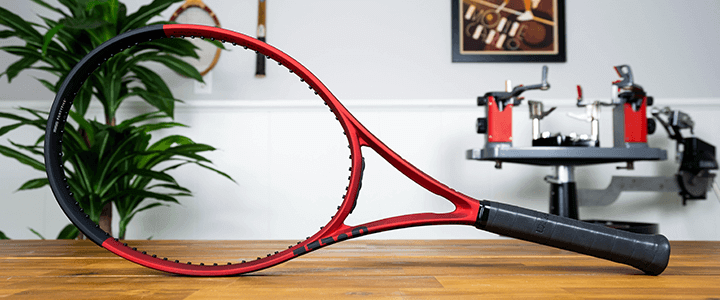
As part of the release of the second generation, Wilson completely reworked the Clash 100 Pro’s paint job, which is a substantial departure from the previous model.
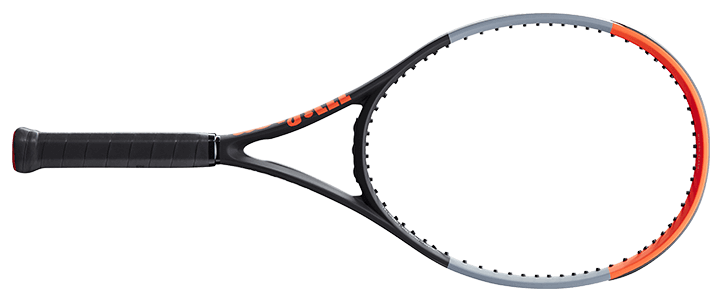
Although a racquet’s design doesn’t affect its performance on the court, it’s often a serious consideration that influences purchases, so I’m happy to see Wilson went with a refresh here.

There was nothing wrong with the original model’s design. However, I didn’t feel it was too inspiring as it stuck with the company’s “uncontaminated design” features, which were consistent across performance models except for an accent color.

For the Clash 100 Pro v2, Wilson treats players to a dark red matte paint job with black accents. Although I’m not typically a big fan of the color red, I think they nailed it with this update.
The racquet’s finish is matte, but it has a subtle metallic shine that’s more prominent in the light. Like the previous generation, the paint is velvety smooth to the touch and reminiscent of rubber.

Wilson’s official name for the paint is an anodized elastic finish, which I think looks great on their racquets. The material’s durability struggled in the past, but I’ve found it to hold up pretty well, and I hope Wilson continues to refine it.
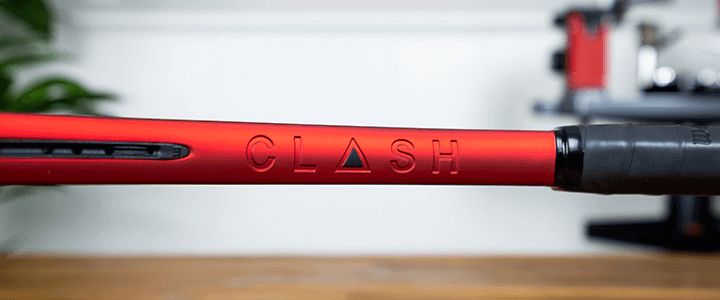
Starting at the racquet’s throat, you’ll find one of the frame’s most unique design features, a debossed logo that’s stamped direction into the side of the frame. It gives the throat a unique texture that stands out from the crowd, although I’m curious what considerations Wilson had to make to ensure consistent performance from each side of the frame.
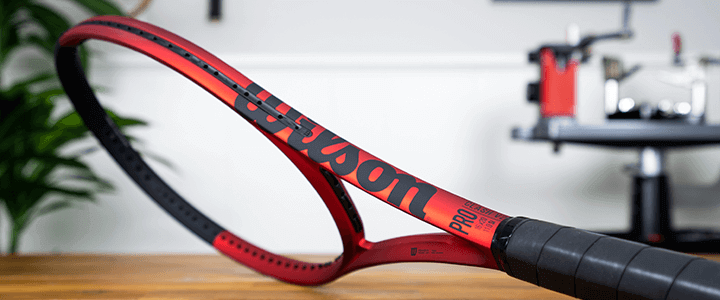
Opposite the Clash logo, you’ll find the Wilson logo wrapping the edge of the racquet along with the frame’s model and stiffness rating, which highlights their emphasis on its comfort.
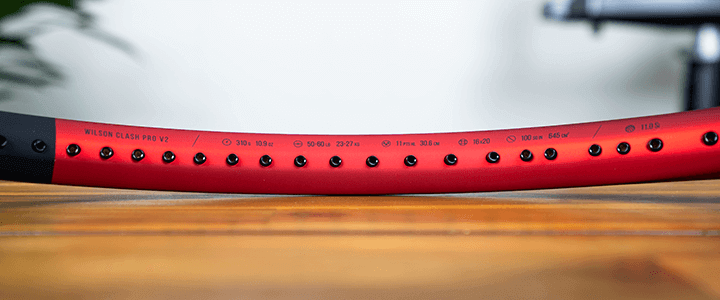
At three and nine o’clock on the racquet’s head, Wilson continues with the matte red finish and prints the frame’s specs on the inside edge of the frame. I prefer to see these printed on the frame rather than having to dig them up online, so I’m happy to see them there because the original model didn’t include them.
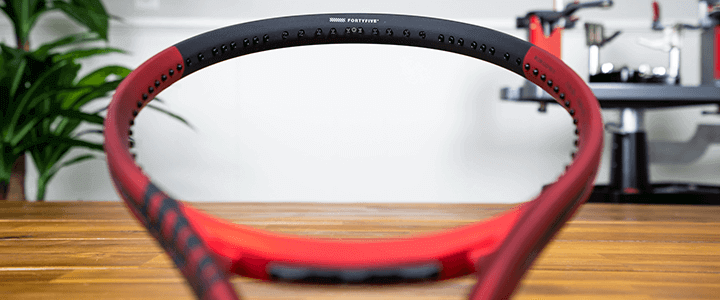
Wilson goes with matte black for the top hoop and highlights the frame’s FortyFive construction in silver.

At the very bottom of the racquet’s handle, you’ll find a red butt cap with a black Wilson logo, which looks similar to the prior model. However, I would have loved to see Wilson print the grip size directly on the cap, so players don’t have to hunt for it.
It’s worth noting that you can find the grip size on the inside of the handle if you pop off the trap door, but most players aren’t aware.
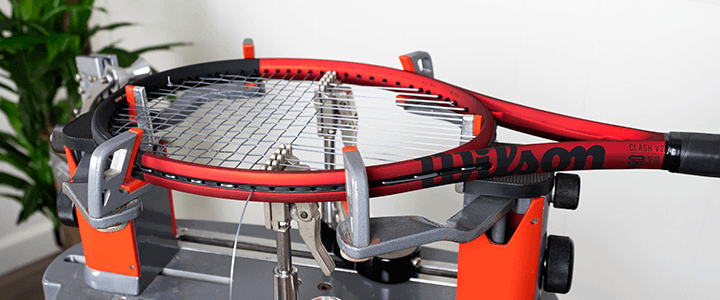
Wilson recommends stringing the Wilson Clash 100 Pro with Luxilon Alu Power and a suggested tension range between 50 – 60 lbs (22.68 – 27.22 kg).
Luxilon Alu Power is a high-quality polyester tennis string that emphasizes control, spin, and feel. I think it is an excellent pair with the racquet, especially considering the strong intermediate to advanced players likely to use it.

I strung 17 gauge or 1.25 mm Luxilon ALU Power for my playtest at 55 lbs (24.95 kg), which is the halfway point between Wilson’s recommended tension, giving me room to adjust up or down in the future based on the racquet’s performance.
If you’re purchasing the Wilson Clash 100 Pro for its low stiffness or RA rating , then I’d urge you to consider a different type of string or, at the very least, a hybrid string setup .
Luxilon Alu Power is fantastic and one of my picks for the best , but it’s stiff, which can cause arm discomfort even within a high-comfort racquet like the Clash.

To help you make the most informed decision regarding the Wilson Clash 100 Pro, I’ve shared some notes about my playtest setup below, so you know exactly how I approached this review.
Although I’m always striving to review the tennis racquets I evaluate objectively, I recognize my unique experience, skillset, and attributes influence my thoughts. If you’d like to dive a bit deeper, you can learn more about me here .
Like all my racquet reviews, I evaluated the Wilson Clash 100 Pro across a set of twelve different performance criteria.
I further detail my ratings in the following sections, including groundstrokes, volleys, serves, and returns.

The Wilson Clash 100 Pro v2 excels from the baseline with impressive power and reliable spin that results from the frame’s construction, midrange 100 in² (645 cm²) head size, and solid 10.9 oz (310 g) unstrung weight.
There’s no doubt the racquet takes a bit more energy to swing, so you’ll have to consider that factor if evaluating this frame. However, the weight is right up my alley, and I found it to move through the ball efficiently and remain stable, even when facing a heavier shot from an opponent.
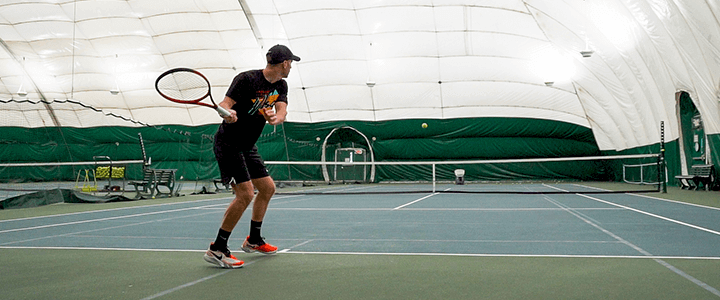
The racquet gains an extra cross string compared to the original model, which slightly stiffens up the string bed and flattens out the ball’s trajectory. However, it doesn’t sacrifice much spin.
The result is improved control, which is a good move by Wilson and better complements the frame’s power. Combined with the racquet’s updated construction at the tip of the hoop, the second generation feels more reliable than the first.
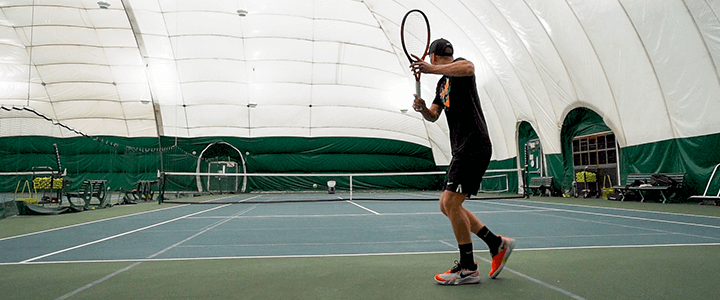
Regarding slice, I thought the Wilson Clash 100 Pro v2 performed well and felt the tightened up string bed also translated to an improved, more consistent response.
The only tradeoff I felt the racquet makes with the tighter 16×20 string pattern is comfort, which is slightly lower than the prior, but still top-notch and remains an excellent reason to pick up this model.

Hitting volleys, the Wilson Clash 100 Pro v2 is mostly fantastic, but it lacks a bit in the feel department.
I found excellent precision with the frame and felt once again that the updated 16×20 string pattern led to an improvement here. My shots tracked accurately, and I consistently hit my spots, which helped instill confidence at the net.
I also thought the racquet delivered solid pace behind my volleys, which helped me put more balls away and put extra pressure on my opponents to react quickly.

Its heavier weight may cause some maneuverability issues for intermediate players who are still developing their strength and technique, but it remains approachable with a head light balance.
Regarding feel at net, I thought the racquet felt a bit muted, and touch volleys didn’t come as easily, but this is an area that often improves the more time you spend with a racquet.

On serves, I enjoyed hitting with the Wilson Clash Pro 100 v2. It’s meaty enough to help deliver extra weight behind a serve, but it’s not overwhelming to swing.
Although I mostly enjoyed the tighter 16×20 string pattern, serving is one area where I felt it lacked a bit of bite. Combined with the extra work it takes to swing the racquet fast to generate spin, it will likely result in a bit less action on the ball for some players who are used to the original model.

On the flip side, I thought the racquet delivered solid precision and a mild improvement over the prior model. Ultimately on serves, I think the newer model makes the right tradeoff for the players I expect will find this racquet appealing.
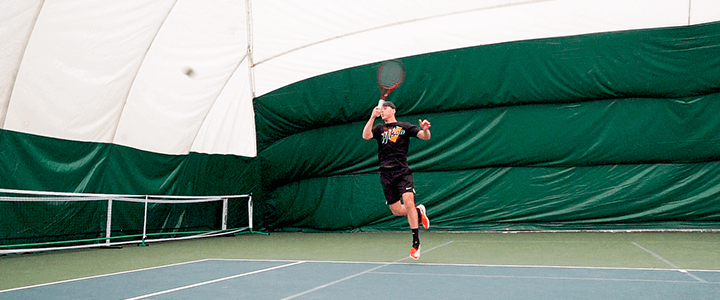
On returns, the Wilson Clash Pro 100 v2 offers a reliable performance that can withstand the pace of a heavy serve.
It’s maneuverable enough to respond to quickly bigger serves while also having the stability to avoid getting pushed around, which ultimately translated to added control in my replies.
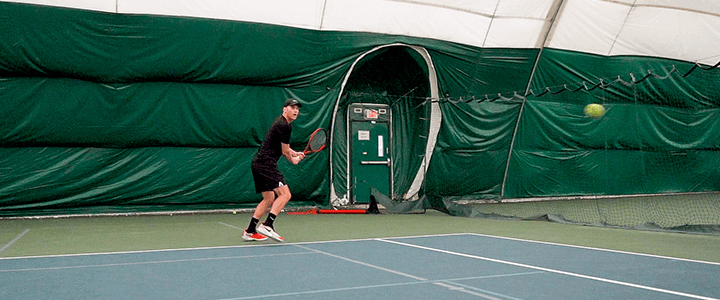
I also appreciate the racquet’s slightly larger sweetspot compared to the prior model, which along with the mid-range head size, affords me extra margin for error and improved consistency.
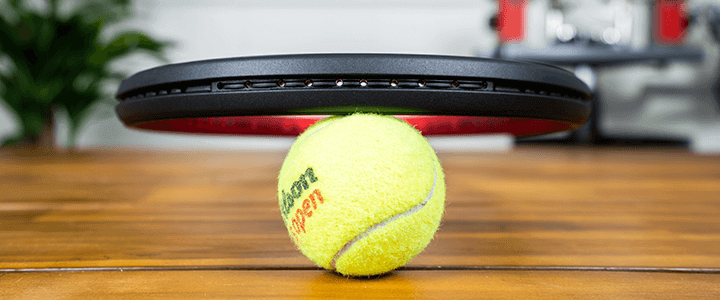
Strong intermediate to advanced tennis players who demand comfort but don’t want to give up too much power will be right at home with the Wilson Clash 100 Pro’s all-around performance.
It excels from the baseline allowing players who can swing it confidently to hit a commanding ball while retaining plenty of control in a comfortable package that’s easy on your arm.
I’d encourage beginners and early intermediates to steer clear of this frame, which will be too demanding. It’s also not ideal for players looking for maximum free power and spin. However, the alternatives will undoubtedly lead you to less comfortable racquets, so it’s a tradeoff you’ll need to consider.

Overall, I’m a fan of the updated Wilson Clash 100 Pro v2, but I wouldn’t flat-out recommend every player upgrade because it depends on your priorities and preferences.
Who Should Upgrade
For starters, I’d only encourage you to upgrade to the Wilson Clash 100 Pro v2 if you enjoyed the unique feel of the first version, which hasn’t changed dramatically.
If so, players who felt the original model lacked control and a consistent response will be the best candidates for an upgrade.
The latest generation moves from a 16×19 to a 16×20 string pattern, which stiffens up the string bed, lowers the trajectory or flight path of the ball, and slightly reduces power, which subsequently lends itself to more control.
Combined with the improved construction of the frame at the tip of the hoop, I think the racquet showcases a marked improvement in precision over the original racquet.
However, it does come at a small cost, which is a bit less spin, and a slightly less forgiving feel. I have a semi-western forehand grip and rely heavily on topspin, but I still prefer the latest model because I think the gains outweigh the losses.
With that said, if my comments resonate with you, I’d still recommend you consider demoing the racquet, which will help ensure you’re confident in your decision. Wilson has an excellent demo program if you’re interested in giving it a shot.
Who Shouldn’t Upgrade
If you’re happy with your existing Wilson Clash 100 Pro v1 and don’t feel it lacks control, enjoy the open 16×19 string pattern that helps maximize comfort and spin, and lends itself to a bit of extra power, then you may want to hold off on switching.
The original model is a solid frame that will undoubtedly remain the superior option for some players, so you shouldn’t feel like you need to take the plunge and spend the extra money.
Of course, if you don’t have a strong feeling one way or the other and enjoy the look of the latest generation, then there’s nothing wrong with upgrading either, especially if you dig the new paint.
I believe most people who are perfectly satisfied with the first generation will still enjoy hitting with the latest model, so if the upgrade is tempting, I don’t think you’ll be disappointed.
Wrapping Up
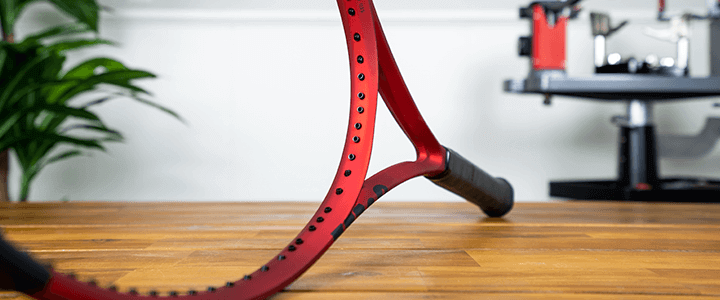
When it comes to modern players’ racquets , there is no shortage of options for players to consider, but the comfort of the Wilson Clash 100 Pro v2 is a cut above the rest.
For that reason, I’d expect more players to adopt the frame, especially those who played competitively at a younger age and are looking to stick with the game but want to protect their arms.
Hopefully, this review helped shed some light on what to expect from the Wilson Clash 100 Pro v2. If you have any follow-up questions, please don’t hesitate to post a comment.
Home > Gear > Racquets > Wilson Clash 100 Pro v2 Review
Play Better Tennis
Improve your game alongside our community of tennis players
Discussion Boards Join the conversation with other members of the community.
5 Point Friday Read our weekly recap of the 5 most interesting things we dig up in tennis.
In-depth Resources Learn with comprehensive resources to help you improve your game.
Leave a Reply
Leave a reply cancel reply.
Your email address will not be published. Required fields are marked *

- Search forums
- Tennis Equipment
Clash: 100 Tour vs. 98
- Thread starter flex
- Start date Nov 27, 2020
- Nov 27, 2020

Wilson Clash 100 Pro (Formerly Tour) Racquet | Tennis Warehouse
Wilson Clash 98 Racquet | Tennis Warehouse
Dartagnan64
I think they play pretty similar in the brief hits I've had with both. I never really gelled with the Clash feel but I'm surrounded by them as several of my buddies and my wife use them. i don't think any of them became better players but their arms don't complain any more.
Hall of Fame
I recently posted the same thing cheers https://tt.tennis-warehouse.com/index.php?threads/clash-tour-pro-vs-98.684798/#post-14848795
Similar threads
- myfavoritesportistennis
- Dec 12, 2021
- Jul 6, 2020
- Oct 10, 2020
- Oct 27, 2020
- Tennisfreak12401
- Aug 16, 2020
Wilson Clash Pro Review (Revisited)
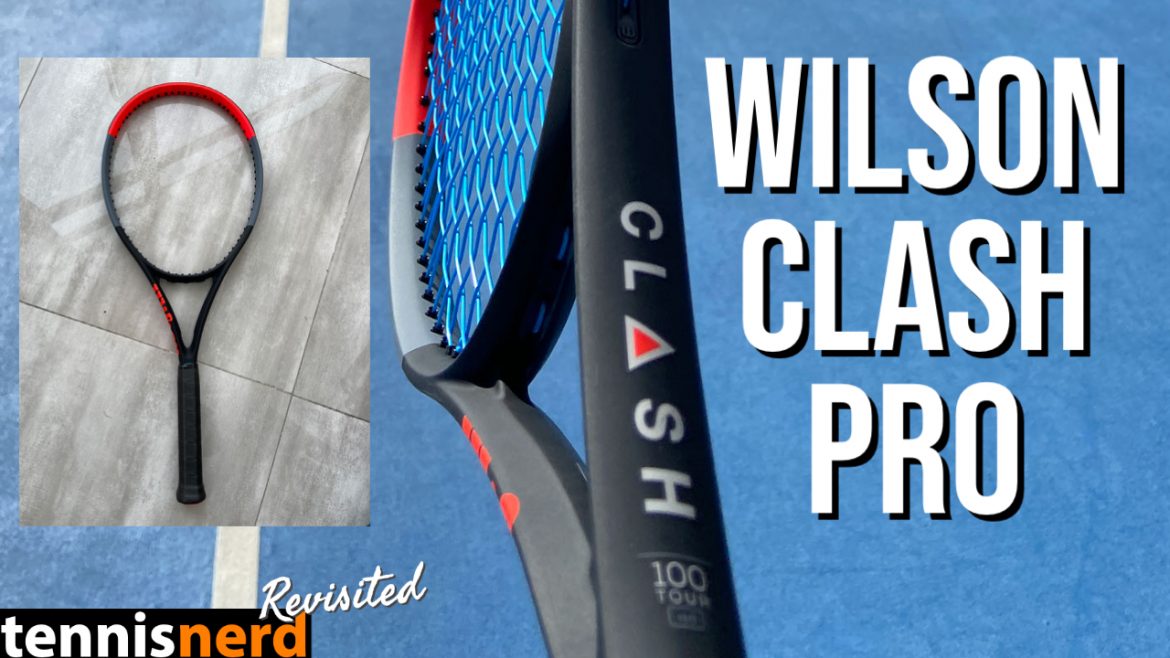
I did my Wilson Clash Tour review in April 2019. But the racquet has since changed name, so here is my Wilson Clash Pro Review (revisited).
I think it makes sense to test racquets again when some time has passed to see if what you felt then stands true today. That was the idea with revisiting my Wilson Clash Pro Review. Why the racquet changed name to Pro? I think Wilson wanted to make a transition to Pro across their racquets (they also changed the Ultra Tour to the Ultra Pro ). They were also sued by the band “The Clash” a while back and perhaps changing it from Clash Tour, is less of an infringement on their brand name and Google searches?
No matter what the reason was for the name change, it was just a name change. The racquet is still the same.
Read more about the Clash Pro here or read this interesting article from Forbes about the Clash development .
This post contains affiliate links and I will be compensated if you make a purchase after clicking on my links.
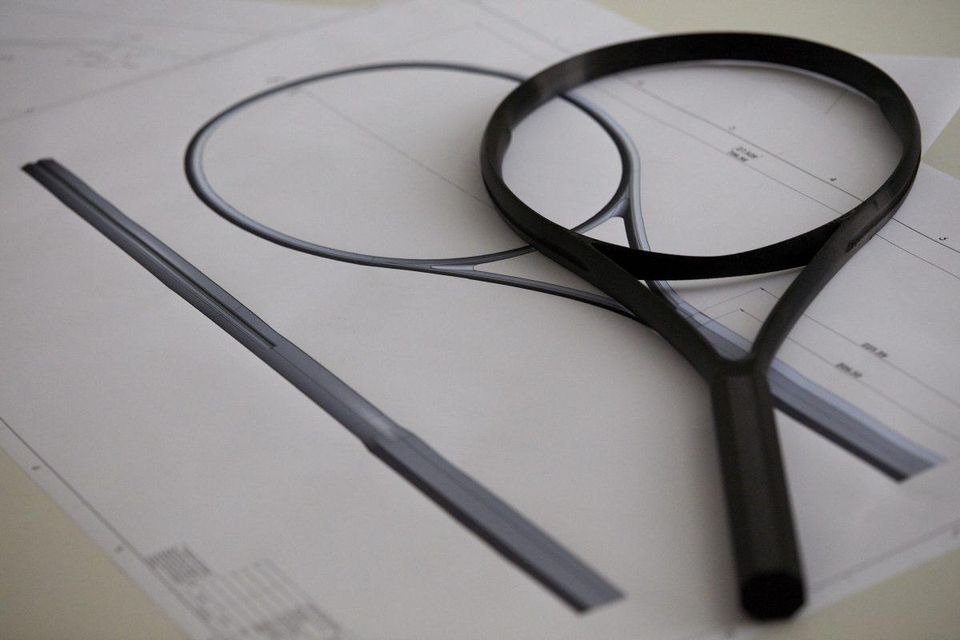
The Clash series felt like real innovation when they were introduced. Most of the time tennis racquets get quite small updates with an addition of a material or a slight change of beam thickness. But with the Clash racquets, something new was introduced. A thick-beamed, spin-friendly racquet with a low flex rating. And when I write “low flex rating” I mean really low, Clash racquets are usually measured around the mid 50s in flex! This moves into so-called “wet noodle” category which old-school frames mainly inhabit. But the Clash has a thick beam, a bit of free power and more spin than most vintage frames. It’s more like a Pure Aero that bends like crazy.
Two key technologies included in Clash racquets are: Free Flex and Stable Smart. The Free Flex is all about the racquet bending, which makes it arm-friendly. The Stable Smart is about it also being stable while having all that flex in the racquet.
Head size: 100 sq inches String pattern: 16/19 Balance: 30.6 cm or 11 pts HL Weight: 310g Beam: 24.5 mm
I have tried the Clash Pro with various string setups. For this play-test I tried it with Luxilon Alu Power 1.25 and Mayami Tour Hex 1.23 at 55 lbs or 25 kg.
Strung specs: 326.9g, 31.4 cm balance, 321.5 SW
When you look at the specs there are two things you need to consider. The flex will make this racquet less powerful than a Wilson Burn or a HEAD Extreme for example. But for players that suffer from arm issues, that should be a worthy trade-off.
It’s a very head-light frame, which I think appeal to a lot of players. But more advanced players might want to add some weight or go for the increased control of the Clash 98 .
How does it play?
The Clash racquets offer a large sweet spot and easy access to spin and some power. For many recreational players that haven’t used flexible racquets before, they will enjoy the soft response and the feeling of the ball sinking in to the string bed. My favorite part of the Clash is that they are all arm-friendly racquets, which is great in today’s game where most players use stiff setups that can lead to tennis elbow, wrist tendonitis or shoulder pain.
I have tried the Clash Pro with more comfortable strings like Luxilon Smart at lower tensions (50 lbs) and stiffer strings like Solinco Tour Bite at 55 lbs. I like to get more control out of my racquet and prefer the stiffer setup, but if you like to get extra depth on your shots and naturally hit with a good amount of spin, you can go for a softer setup.
I am an old-school kind of guy that enjoy flexible frames, so playing with the Clash is a lot of fun. But one issue with the flex is that you don’t feel the ball a hundred percent. It literally catapults to the other side. Dimitrov said it like this when he tried the Clash: “The ball catapults so well off the racket,” he says. “It bites, absolutely uses a lot of spin. You can just put the ball into the corners.”
He is right about most of that, but putting the ball in the corners for advanced players is where it gets difficult. I simply don’t have the type of game that benefits from using the Clash line. I like a bit more direct feel on my shots and sometimes with the Clash I don’t know exactly where they will land. On the other hand, I am not the target group here, as I prefer the more control-oriented side of the spectrum.
Stroke by stroke
Groundstrokes – the Clash shines from the back of the court for players who generate enough spin and go for bigger targets. Precision-minded players who go for the lines will not find enough control here, I feel. Volleys – The stability is impressive, but if you need to hit smaller targets, the catapult effect of the racquet will not make you entirely happy. Serves – The head-light feel makes this racquet easy to whip around on serve. It also provides nice rotations on kick serves. Not the most pace on the market, but it’s a solid serving stick. Touch – The massive flex and the large head size makes this racquet difficult to use on drop shots and touch shots. It feels a bit too muted.
Pros and Cons
+ Large sweet spot + Excellent arm comfort + Spin-friendly – You need to go for bigger targets – A bit too muted when it comes to touch shots
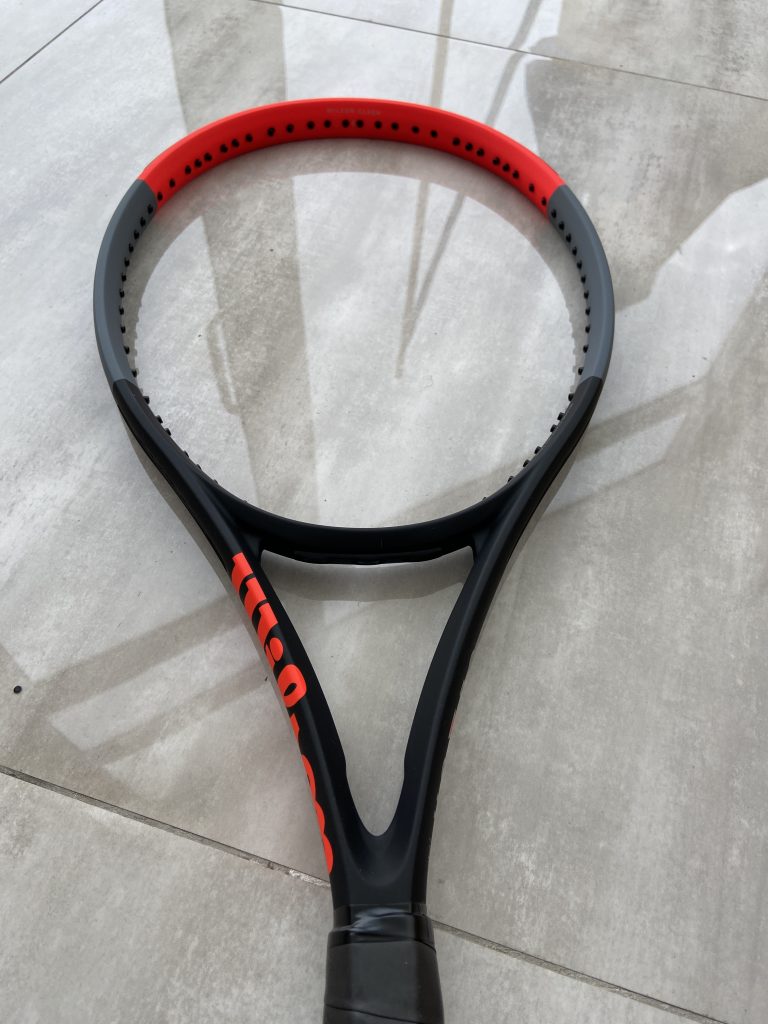
One of the key outtakes of this Wilson Clash Pro Review is that the Clash was actually a real piece of innovation in an industry that usually moves slow when it comes to pushing the envelope of development. A thick-beamed, very flexible racquet was something entirely new and refreshing. The accompanying marketing campaign was a success and from what I heard, the Clash is one of Wilson’s bestsellers of all time.
I like that Wilson went for something completely different here and I applaud their guts to focus on arm comfort while still making the frame modern. But the racquet doesn’t come without drawbacks. The flexible feel coupled with the large head size and thick beam, makes the racquet a bit disconnected at times. Players looking for precision and who like to hit the ball more on a flat pane will likely not be fans. But for kids, veterans and spin players around NTRP 1-4, there is a lot to like with its large sweet spot and comfortable response.
You can buy the Wilson Clash Pro or other Clash racquets from Wilson (affiliate link) or any major racquet retailer.
Have you tried the Clash Pro or any other Clash racquets?
Jonas Eriksson
Jonas has been known as "tennis nerd" mainly for his obsessing about racquets and gear. Plays this beautiful sport almost every day.
Federer might not play the Australian Open 2021
Updated 2021 atp tour calendar, you may also like, head gravity tour 98, karolina muchova’s racquet – player profile, new tecnifibre tf40 (2024), head radical mp 18/20 review, adv backpack v2 review, wilson rf pro or pro staff rf 97..., wilson rf racquet review, nordicdots model 99 racquet, racquet advice, head extreme mp review 2024.
Spelade från mars till oktober med babblat pure aero (300g) med yonex polo tour 25 kg. Kul kombo och bra med fart men en tydlig och smärtsam stegring av smärta i min axel ledde till att jag nu i november bytte till Clash pro med Solinco tour bite soft 25 kg. Har sedan dess spelar ungefär lika mycket men minskat eller helt dragit ned på första serv och andra slag ovanför axelhöjd för att minska rörelse som känns dålig. Har nu efter två månader med Clash en tydlig positiv förändring där jag varje vecka känner mindre smärta och återhämtar mig snabbare från mina pass. Ska idag få hem ett Clash 98 som ska bli kul testa och som får komplettera min Clash pro. Tycker känslan av pocketing i min pro är helt unik och racket får mig att vilja spela ett lekfullt spel där alla slag används och självförtroendet för att våga gå för en del svårare slag ökat jmf Pure areon. Så spänd inför 98 inch, aldrig testat innan men värt prova. Tack
In golf, the flex of the club shaft is designed to allow loading of power through the swing and release that power at contact. If you have a slow swing you should get a highly flexible club typically called Soft / Ladies / Senior because this will allow the shaft to bend a lot through the downswing and then straighten around the moment of contact. If you are an advanced player or Pro you need a Stiff or Extra-Stiff golf shaft in order for it to flex and return to straight within the much quicker time of your swing. If a Pro swung a soft flex club, it would not return to straight at contact, or they would have to swing much slower than usual to make it. In either case, the shaft flex allows power to be stored in the shaft then returned to the ball, if you swing with correct timing.
In tennis, on the other hand, flex is typically about what happens to the racket upon impact with the ball. A stiff flex allowing little deformation on impact and more complete return of power to the ball. However, my feeling is that the Clash is actually the first racket where you are supposed to feel the flex through your stroke before it hits the ball. Unlike other soft frames where you don’t feel anything unusual in your swing, just some additional dwell time upon contact, when I swing the Clash I can feel flexion before contact. So IMO if you time the swing with the flexion, the Clash actually puts more power into the ball using the same loading concept as golf clubs. Indeed I have read that the flex is mainly in the throat area, whereas the hoop is actually quite stiff, so you should gain from power both from the loading of the throat area and due to the stiffness at contact. I’m not sure, but I think that’s what FeelFlex and StableSmart are really doing.
Interesting comment! You might be right about this. For sure some innovation going on…
Love your site and YouTube channel and signing up to be a patron. I have a question about string recommendations. My daughter is a junior competitive player here in humid Houston–11 years old, very strong, hits flat but working on more topspin. She’s playing with a Wilson Clash 100L (v1: https://www.tennis-warehouse.com/Wilson_Clash_100L/descpageRCWILSON-WC100L.html ), using Wilson NXT strings at 56 pounds fray at first practice and break within 3 weeks (playing 4 times per week)–we’ve learned how pathetic the NXT is after 2 sets of strings (never again). She generates a full swing with a lot of power and tends to hit long–we’re working on that topspin a lot more for consistency. Since the Clash is a very soft, flexible racket, and she’s quite strong, with pretty good technique, we’re less concerned about arm-friendly strings and more about reducing power and improving topspin and placement. String durability has become a new factor for us to consider. Do you have any particular string and tension recommendations? Thank you!
Hi Jason, for the Clash you could play with a softer poly to improve durability. Maybe HEAD Lynx Touch 1.25 at 50 lbs or Solinco Tour Bite Soft 1.25 at a similar tension. Volkl Cyclone Tour 1.25 at 50 lbs is also an option.
A softer poly won’t be an issue to the arm, she will get more control and can adjust tension based on that. I tend to recommend a lower tension for a poly in the Clash.
I hope this helps and thanks for joining Patreon.
I had the Wilson clash pro V2 100 and 98 out on demo. I had already played with the V2 clash 100. Like people said you can hit to areas not to spots with the clash . After the demos I found the pro 100 with the 16/20 string with polyester on the vertical and nylon on the cross gave me the Extra topspin control loop. The 98 pro not so much loop or control that I hoped for, a flatter spin. The smaller head is faster thru the air especially on serve. I took the 100 pro with volki cyclone polyester strings 1.3 (180 stiffness and 8.0 on spin) at 55lbs. This deadened the bed so the racket is much more a control racket….
Leave a Comment
Save my name, email, and website in this browser for the next time I comment.
Please wait while you are redirected to the right page...
- Members Login
- wilson shift vs wilson clash full racket comparison
Wilson Shift vs. Clash Tennis Rackets Compared (Update 2024)
Ready to level up your tennis game? Choosing the right racket can make all the difference. Two of Wilson's most popular options are the Shift and the Clash.
We've updated this comparison for 2024 to help you decide which one best suits your playing style. From power to control, we'll break down the key features of each racket to ensure you hit the court with confidence.
Custom Fittings
Discover your perfect racket and string combo!
Disclosure: Our website contains affiliate links, which means we may earn a commission if you purchase through these links. This comes at no additional cost to you and helps support our efforts in providing valuable information about tennis equipment.
Rest assured, we only recommend products we believe will benefit our readers and enhance their tennis experience. Your support is greatly appreciated!
Finding Your Sweet Spot: Playability & Performance Breakdown
Buying a new racket can be an overwhelming process. It would be nice if there were just a few models catering to key abilities and demands. Rackets for beginners, intermediate and advanced players, and rackets that address key demands such as spin, power and forgiveness.
But each player is different with their own specific demands which makes manufacturers eager to ensure that they have something for every nuance possible, even though certain models may appear to overlap in terms of what they offer.
So, with manufacturers introducing a myriad of new models it can make the concept of choosing a new racket somewhat of a bewildering challenge.
As an example, Wilson has just added a new model to what is an already accomplished family of frames. Their newest ‘Project Shift’ model has met with rave reviews but consumers may wonder where this frame sits within the Wilson stable.
Here we look at Wilson’s newest offering, comparing it with their ever-popular Clash model, the nearest sibling within the Wilson family of frames.
Who Are Wilson Tennis Racquets?
Few manufacturers have dominated the tennis spotlight like US-based Wilson. In recent years they have experienced glittering success on both ATP and WTA tours with Roger Federer and the Williams sisters using Wilson frames to not only win majors but to capture the attention of racket buyers worldwide.
But prior to these contemporary greats, Wilson has a long and enviable history with names such as Connors, Sampras, and Edberg forming an enviable Wilson alumni.
And for the future, with the likes of Tsitsipas, Raducanu, and Jabeur relying on Wilson hardware, it seems that more majors are in the stars.
On the pro tours, most of Wilson’s tour staff play either the Blade or Pro Staff model, and inevitably, both models have won an avid fan base among amateurs. But what of the Shift and Clash frames?
Neither racket is necessarily designed for use by elite-level players, rather they are created primarily for the needs of recreational players.
So, with the Clash and Project Shift models can Wilson pivot from tour-level success to give casual and club-level players an effective weapon? And how do they compare?
Wilson Clash
The Wilson Clash is a model that has garnered a lot of interest from recreational players. Its main feature is its ‘soft’ construction. With an RA (stiffness rating) ranging from 57-60, this family of rackets has earned a reputation for comfort and ‘arm friendliness’.
Then, the compliant construction is paired with a substantial beam profile (mostly a constant 24.5mm) to provide a powerful package that has a distinct appeal to many club players.
Cosmetically, the latest iteration of the Clash series sees Wilson adopt a rich and unique red hue that is striking yet classy.
Wilson has dedicated itself to innovative color schemes as witnessed upon the Blade , Ultra, and indeed the Project Shift line, and similarly, the cherry-red Clash looks very appealing.
Wilson Clash Models
Within the Clash range, there are a number of options spanning 198-sq-inch, 100-sq-inch, and 98-sq-inch head sizes. Additionally, you can choose between a spin-centric 16×19 string-bend or a more control-orientated 16×20 option.
An ultralight model at 265 grams is available while those wanting a more weighty option can select a 98-sq-inch model at 310 grams or two 100-sq-inch options – the ‘regular’ frame at 295 grams and the ‘Pro’ option at 310 grams.
Here is a list of the Wilson Clash models currently available.
- Wilson Clash 100 v2
- Wilson Clash 100 v2 Pro
- Wilson Clash 98 v2
- Wilson Clash 100L v2
- Wilson Clash 100UL v2
- Wilson Clash 108 v2
Who Is It Aimed At?
Anyone who needs power without stiffness will enjoy the Clash, albeit in the wrong hands the racket can feel a little too powerful and uncontrollable. For those more powerful players that still demand an arm-friendly racket, however, the Pro version does temper the unpredictability to make it a more viable proposition – especially with the right string/tension.
Ultimately, the Clash has earned itself a reputation for comfort and power, and the demographic for this type of frame is wide-ranging.
From juniors who have yet to fully develop, to seniors who need a racket to compensate for a natural drop-off in power, the Clash merits serious consideration.
And of course, there are many players who depend upon the Clash to keep them playing – those who struggle with tennis elbow can especially rely upon this frame’s much-documented softness.
Discover your favourite model of the ever popular Wilson Clash tennis rackets
Wilson Labs Project Shift
We can understand why players will want to compare the Wilson Clash and Shift models. The former is renowned for its power and softness while Wilson’s newest model promises unique bending technologies in tandem with a substantial beam that potentially suggests some sort of crossover in qualities.
On-court however, the experience is very different.
The Project Shift frame is indeed a new hitting experience that takes an adjustment period and demands something from its user – the new ‘lateral bending’ technology is created to emphasize what the player puts into the racket.
Where the Clash frame will readily compensate for a lack of power and/or spin, the P roject Shift asks its user to participate long before its proprietary technologies begin to work.
But nonetheless, the Project Shift will embellish solid mechanics and could appeal to better players looking for a versatile weapon that is a hybrid between a forgiving racket and one designed for ‘players’.
Shift Models
The Project Shift line is limited to just two options at this stage, quite possibly because it is so new, but maybe because it is designed with stronger players in mind.
Where the Clash line is extensive with both light and oversized frames to make life easier for less skilled or weaker players, the Project Shift comes in a choice between two 99-sq inch models at 300 grams (16×20) and 315 grams (18×20) which naturally narrows the field in terms of who should play this frame.
- Wilson Project Shift 300
- Wilson Project S h ift 315
It is very likely that the Project Shift range will expand over time. But whether the ultimate line-up will cater to a demographic as comprehensive as the Clash is somewhat doubtful. We feel it is aimed at slightly stronger players, both technically and physically.
Without question, the Project Shift frame is aimed at good players who want to turbo-boost their game. As mentioned, this racket will enhance good mechanics, making strong shots more powerful and adding revolutions to any solid topspin or slice – but you have to meet the frame at least halfway, unlike the Clash, the Project Shift won’t do all the work for you.
On paper, it looks like a much stiffer proposition than the Clash with a RA (stiffness rating) in the high 60s.
In our experience, the lateral bending technology helps to mitigate much if not all of the harshness expected from such a superficially stout construction.
Hearing that the Project Shift plays ‘soft’ will undoubtedly lead many to compare this frame with the Clash model but truthfully a meaningful difference exists between the two.
So, the simple choice in terms of playability is between free power at the expense of complete control (Wilson Clash) versus a more demanding but more accurate hit (Wilson Project Shift).
Is the Wilson Shift racquet the one for you?
Which Is Better?
Truthfully, there is no ‘better’ racket because they are fundamentally different. Yes, they are compliant frames with powerful beam profiles, but the player who needs the benefits offered by Wilson’s Clash will be short-changed by using the Project Shift racket.
If you have sensitive joints or lack power, Wilson’s Clash is your friend, you just have to discern the right model for your ability.
Novices will love the 108’s forgiveness and free power while more accomplished players will enjoy the more substantial Pro or 98 model.
Conversely, stronger and more experienced players who can provide their own muscle may well thrive with a Project Shift in their hands – whether that is the spin-centric 300-gram model or the more control-focused 315-gram version, both will amplify good technique.
Could the Wilson Clash or Wilson Shift Be Your Excalibur?
We can see why Wilson has introduced the Project Shift line of rackets. In many ways, it borrows from many of the models with Wilson’s family of frames and speaks to the nuances required by modern tennis players.
If you find Wilson’s Clash too unpredictable, their Ultra too powerful and the Blade/Pro Staff lines too demanding, the Project Shift could answer your prayers.
It is a forgiving player’s racket that offers a lot of desirable qualities and may eventually feature in the bag of some professionals, especially WTA players.
By the same token, however, while the Clash may never be used on tour, we cannot diminish its value for a broad spectrum of amateur players. It is great fun to use and responsible for helping many players to enjoy tennis a lot more.
And if you are curious about what racket is right for your game, check out our excellent custom fitting program . Save time and money by letting us do all the hard work of researching your next racket and string combo. No more misery and frustration as we take a deep dive into your style of play, injury history, goals, and much more to find your perfect setup.
Beyond Specs: Your Personalized Path to Tennis Success (2024)
As of April 2024, neither the Wilson Shift nor Clash lines have seen major updates. This comparison offers a comprehensive look at their current features.
However, it’s always a good idea to check with retailers for any potential variations or special edition releases. With this knowledge in hand, you’re well-equipped to choose the racket that will propel your tennis game to new heights!
Looking for Help with Your Tennis Racket and String Setup?
Personalized tennis racket and string recommendations can significantly enhance your game. By tailoring the equipment to your playing style, you’ll experience improved performance and comfort on the court.
With the right racket and strings, you can boost your power, control, and accuracy. These personalized recommendations can help prevent injuries and reduce fatigue during long matches.
Overall, investing in personalized gear can take your tennis game to the next level and make the sport even more enjoyable.
If you’re looking to get the most out of your racket setup, then let thetennisbros.com do the hard work for you!
With our custom fittings , you get three personalized string recommendations to help boost your performance on the tennis court! Give us a try today.
Personalized racket and string recommendations to supercharge your game
41 Lessons · $49.00
Doubles Tactics
Supercharge Your Doubles With TheTennisBros.com
10 Lessons · $35.00
The Art of Volleying
Become clinical at the net with our in depth volleying walkthroughs!
35 Lessons · $49.00
Singles Tactics
Outsmart your opponent with superior tactics! Our strategies can be quickly implemented for instant results!
We save you time and money by doing the painful research process for you!
No more frustration in your game, due to your equipment failing you!
Start playing the best tennis of your life and win more matches!
Get Our Free Guide to Supercharging Your Tennis Equipment!
Sign up to receive your Free Guide to Supercharging Your Tennis Equipment , straight to your inbox!
Explore more
Nov 21, 2023 • Clash Wilson
Wilson Clash 98 V2 Tennis Racket Review: Is It For You?
When we first stepped onto the court with the Wilson Clash 98 V2 in our hands, we were eager to find out if the rumours were true. Were we going to experience the perfect balance of power and control this racket is known for? The Wilson Clash series has redefined…
Nov 16, 2023 • Ultra Wilson
Wilson Ultra Pro 18 x 20 V4 Tennis Racket Review
Precision and Control Redefined When we first stepped onto the court with the Wilson Ultra Pro 18 x 20 V4 in our hands, we were eager to experience the level of control and precision that this racket promised. The Wilson Ultra Pro series has a storied history of delivering control,…

IMAGES
VIDEO
COMMENTS
Wilson Clash 100 vs Wilson Clash 100 Pro (Tour) Comparison. For this racket comparison, I will be using the V2 of the Clash 100 (or "C100") and Clash 100 Pro (Tour) (or "C100P"), which were both launched in 2022. Racket Specs Comparison. Specs: C100 C100P; Version: V2: V2: Design: Head Size: 100in: 100in: Length: 27in:
The all new Wilson Clash line is designed by Wilson to counter today's stiffly built frames with one that is uniquely flexible without losing any power or spin. The Clash 100 Tour, now called the Pro, is the heavier of the two initial versions of the Clash. Like the standard Clash 100, it leverages two key innovations.
Wilson Clash vs. Blade, Pro Staff & Ultra. The Wilson Clash appears to have cemented its place in the Wilson performance racquet lineup, so let's take a quick look at how it compares to a few of the other popular models. ... Wilson Clash 100 Pro (previously Tour) At 10.4 ounces (295g) unstrung, the standard Wilson Clash 100 above is a tad on ...
The Wilson Clash 100 Tour, at 310g unstrung, and with a stiffness rating of 55 is neither of those. The Clash has a fairly thick frame, but it is super flexible, which means comfort and feel. So as you can see, the Clash is kind of promising the Holy Grail of great performance with great comfort, and of course, Wilson marketed this like crazy.
The Wilson Clash 100 and Clash 100 Tour tennis racquets get broken down in our full-length review. Compare specs, new technologies and innovations in this brand new racquet line. The Wilson Clash has been engineered to be the most flexible racquet on the
The standard Wilson Clash, which I review here, weighs 295 grams unstrung, while the Clash Tour weighs 310 grams unstrung. What is different from this racquet and for example, the Babolat Pure Aero or the HEAD Graphene 360 Extreme Pro, is that it is far more headlight and significantly more flexible. This is where the magic and wow-effect of ...
The Clash 100 Tour is a slightly heavier frame than the Clash 100, gearing towards players that want a little more control and stability without the loss of flexibility. As a truly loyal Wilson racquet user, I was both excited and nervous to see what changes this frame brought to the court. Groundstrokes.
The Wilson Clash Tour is my new racquet of choice With a combination of power, comfort, and control with a very head light balance, the Wilson Clash Tour truly blends the best of all the worlds. It's as comfortable as any racquet I've ever hit, including pro Kennex, Prince O-Ports and Phantom line, and even some of the classic head frames ...
The Wilson Clash tennis racquet comes in several versions that vary in weight and size. Below is a list of the different Wilson Clash racquets on the market today. Wilson Clash 100 v2. Wilson Clash 100 Pro v2. Wilson Clash 98 v2. Wilson Clash 100L v2.
By Jon Crim. TennisCompanion. Updated for 2022, the Wilson Clash 100 Pro v2 seeks to build on the first generation's popularity with an intriguing update that includes a new 16×20 string pattern to enhance control. However, beyond the sting pattern, Wilson didn't stray too far from the original design's specs, opting for a moderate ...
Clash 26" & 25". Clash 26" and Clash 25" are our two junior-sized models. These rackets are made with the same carbon fiber performance as our adult models, therefore making the transition that much easier when young players are ready for a full-sized racket. We'd recommend the 25" for ages 8-10 and the 26" for ages 10-12.
Nov 27, 2020. #1. What is the difference between these 2 frames? On paper, they are very similar. Both have the same weight, string pattern, flex and balance. The difference are: 1 - the 98 has a beam of 24 whereas the 100 Tour is 24.5. 2- 2 square inch in the headsize. Anyone that hit with both can chime in on their experience with the two?
Summary. One of the key outtakes of this Wilson Clash Pro Review is that the Clash was actually a real piece of innovation in an industry that usually moves slow when it comes to pushing the envelope of development. A thick-beamed, very flexible racquet was something entirely new and refreshing. The accompanying marketing campaign was a success ...
Comparison of the Wilson Clash 98, 100, and 100 Pro. For the below comparisons, I have used the V2 versions of the Clash 98, 100, and 100 Pro. Clash 98 vs 100 (Racket Specs) As you would expect, the specs of both rackets aren't worlds apart as both are 27in long rackets, with relatively thick beams and a low stiffness rating.
🤓Website: https://tennisnerd.net 🛑Patreon: https://www.patreon.com/tennisnerd 🙏Support Tennisnerd: https://tennisnerd.net/support-tennisnerd 💌Instagram: ...
The Clash 100 and Pro Staff 97 are two of Wilson's top-selling tennis rackets with both being very popular with recreational club players.. In this article, I will be looking at the racket specs of the Pro Staff 97 and Clash 100 to see how these two tennis rackets compare to each another.. Wilson Clash 100 vs Pro Staff 97 Comparison. In the comparison below I have used the V2 version of the ...
It's more user friendly than the pro staff but still more control than power. If you want power, comfort and spin go for the clash. Remember that it's pretty light so if you have the fundamentals down and can manage the weight the clash pro is something I'd recommend. It's just more stable and the weight is in the handle so it's ...
Where the Clash line is extensive with both light and oversized frames to make life easier for less skilled or weaker players, the Project Shift comes in a choice between two 99-sq inch models at 300 grams (16×20) and 315 grams (18×20) which naturally narrows the field in terms of who should play this frame. Wilson Project Shift 300.
WILSON CLASH TENNIS RACKETS. More power, more control, better handling for all player types. Meet Clash: the latest and greatest evolution of Wilson Tennis Rackets.. Clash is our most broadly-appealing tennis racket line…whether you're just learning the game or have been competing in tournaments for years, there is a Clash racket designed to take your game to the next level with the ...